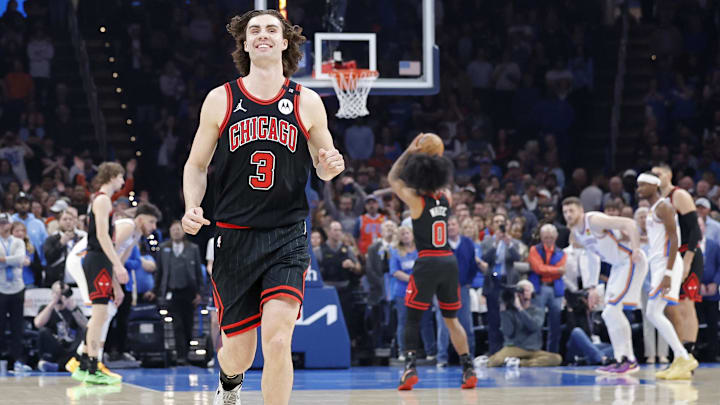The OKC Thunder faithful who watched Josh Giddey develop over three seasons now have reason to follow Chicago's offseason with keen interest.
With other former Oklahoma City players like Ty Jerome and Tre Mann recently securing new, high-priced deals, it raises a compelling question: Is this team's renowned player development system becoming so effective that it's creating financial challenges for other teams?
Giddey’s situation, in particular, underscores this trend.
After showing significant growth during his time with the Thunder, he now finds himself in free agency with elevated value and prompting a major financial decision for the Bulls. This pattern repeats across the league, as players refined in Oklahoma City’s system continue to earn substantial paydays elsewhere.
OKC’s ability to maximize talent ultimately increases the market cost for players they develop, forcing other franchises to make tougher salary cap decisions.
Josh Giddey's second-half stock surge
Giddey's dramatic second-half surge with the Bulls last season showcased the potential Oklahoma City always saw in the 6-foot-8 playmaker.
After a modest start in Chicago, the Australian guard exploded post-All-Star break, elevating his production to 21.0 points, 10.0 rebounds, and 9.0 assists while shooting 37.8 percent from three-point range.
Any OKC fan could see the trajectory that he was on, but now the Bulls face the financial consequences of the development of the Aussie.
Negotiations stiffen
Giddey's camp is seeking approximately $30 million annually, a figure that would place him among the league's top-20 highest-paid point guards.
Chicago has countered with offers in the $20-22 million range, creating approximately a $40 million gap across a potential four-year deal.
Now, Chicago must determine whether to pay premium money for the player Oklahoma City developed or risk losing him.
Most league insiders anticipate a compromise approaching $25-26 million annually before training camp.
The alternative? Giddey could play on his $11.1 million qualifying offer, a path that would create tremendous uncertainty for both sides.
Betting on himself could lead to two vastly different outcomes: he could break out into a clear star and walk for nothing in free agency, or he could regress and struggle to secure anything close to the original $20 million per year range he was projected for.
Either way, he’d be playing well below his current market value.
An emerging trend for former Thunder players?
For Thunder fans tracking former players, Josh Giddey’s free agency situation underscores both the effectiveness of Oklahoma City’s developmental system and the financial ripple effects it creates across the league. Players like Giddey, Mann, and Jerome have gone on to sign significant contracts after departing, reinforcing the value of the Thunder’s player development pipeline.
This trend raises an intriguing question: Could “Thunder castaways” become a recognizable category of players known for outperforming their initial contracts?
If core rotation players like Lu Dort or Cason Wallace eventually leave in free agency and continue to elevate their games, opposing teams may increasingly face the same difficult financial decisions Chicago now faces with Giddey.
His ongoing negotiations will serve as a telling case study in how the league values homegrown OKC talent and whether other franchises can afford the cost of developing Thunder-raised players.
